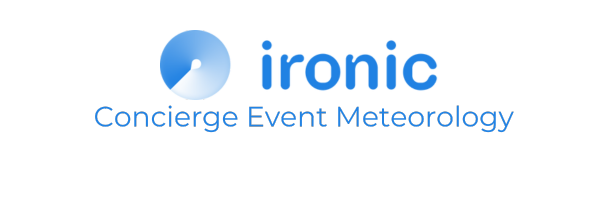West Coast: Coastal Fog, Mild Winters, and Wildfires
The West Coast of the United States is known for its stunning landscapes, ranging from the foggy coastlines of California to the lush forests of the Pacific Northwest. While the climate here is generally mild, it also presents unique challenges, such as coastal fog, wet winters, and the increasing threat of wildfires. Event planners in this region need to be aware of these weather patterns to ensure successful and safe events.
Common Weather Patterns on the West Coast
The weather on the West Coast can vary significantly depending on the specific location and time of year:
Spring/Summer (March - August):
The spring and summer months on the West Coast are generally dry and warm, but they are also marked by the presence of coastal fog, particularly in the mornings. This fog is most common in coastal areas like San Francisco, Los Angeles, and along the Oregon coast. As the day progresses, the fog typically burns off, leading to clear and pleasant afternoons. However, as summer progresses, the threat of wildfires increases, especially in California and southern Oregon.
Fall/Winter (September - February):
Fall and winter bring mild temperatures to the West Coast, but also more frequent rain, particularly in the Pacific Northwest. Cities like Seattle and Portland can experience significant rainfall during these months. While winters are generally mild, they can still bring occasional storms and cooler temperatures.
States on the West Coast:
California: Known for its varied climate, from the foggy coastlines to the dry, fire-prone inland areas. Southern California, in particular, faces a high risk of wildfires during the late summer and fall.
Oregon: Features a mix of coastal fog, wet winters, and wildfire risks in the drier, eastern parts of the state.
Washington: The Pacific Northwest is famous for its rainy winters and mild summers, with fog common along the coast and wildfire risks in the interior.
Planning Considerations
Given the unique weather challenges on the West Coast, event planners need to take a proactive approach to ensure a smooth experience:
Fog Management:
Morning Events: If your event is planned for the coast, be aware that fog is most common in the early mornings. Schedule key activities for later in the day when the fog has typically cleared. If a morning event is necessary, ensure that the venue is equipped to handle reduced visibility and cooler temperatures.
Visibility Concerns: For events where visibility is crucial—such as outdoor ceremonies or photoshoots—consider how fog might impact the experience and plan for alternative locations or times if necessary.
Wildfire Preparedness:
Air Quality and Safety: Wildfires are a significant concern, particularly in the late summer and fall. During these times, air quality can deteriorate rapidly due to smoke. Ensure you have a plan to monitor air quality in real time, and consider the availability of indoor venues where guests can retreat if conditions worsen.
Evacuation Plans: If your event is in a fire-prone area, have a clear evacuation plan in place. Familiarize yourself with the local fire warnings and ensure that your venue is compliant with all fire safety regulations.
Safety Tips
Wildfire Safety:
Air Quality Monitoring: Use apps like AirVisual or local air quality monitoring websites to stay updated on conditions, especially during wildfire season. If air quality becomes hazardous, be prepared to provide masks for guests or relocate the event to a safer location.
Emergency Planning: Work with your venue to establish clear evacuation routes and procedures in case a wildfire threatens the area. Make sure all staff and guests are informed of these plans.
Rain Preparedness:
Rain Shelters: For fall and winter events, especially in the Pacific Northwest, it’s essential to have rain shelters or indoor alternatives available. Ensure that outdoor areas are equipped with waterproof coverings and that walkways are protected from becoming slippery.
Storm Considerations: While winter storms are less severe on the West Coast compared to other parts of the country, they can still impact events. Be prepared for possible power outages or transportation disruptions.
Preparation Tips
Air Quality Monitoring:
Real-Time Tracking: During wildfire season, continuously monitor air quality leading up to and during your event. Apps like AirVisual can provide up-to-the-minute data on conditions. If air quality deteriorates, have indoor spaces ready where guests can seek refuge, and be prepared to provide protective masks if needed.
Alternative Plans: If poor air quality is anticipated, consider moving the event indoors or rescheduling to a time when the air is clearer. Communicate any changes to guests promptly to ensure their safety and comfort.
Fog Contingency:
Event Timing: Plan key events for the afternoon or early evening when fog is less likely to be an issue. If your event must take place in the morning, provide clear instructions for navigating foggy conditions, such as additional lighting or signage.
Photography and Visibility: If fog is likely, work with photographers and videographers to adjust their plans. Ensure that any visual aspects of your event, such as signage or scenic views, are still effective in low-visibility conditions.
Travel Considerations
Fog and Transportation:
Driving Safety: Coastal fog can make driving hazardous, especially along winding coastal roads. Advise guests to allow extra travel time and to drive cautiously. Consider arranging transportation services to and from the event to ensure everyone arrives safely.
Air Travel: Fog can also impact flights, particularly at airports like San Francisco International. Encourage guests to check their flight status frequently and plan for possible delays.
Accommodation Tips:
Proximity to the Venue: Recommend that guests stay in accommodations close to the event venue, particularly during wildfire season or in areas prone to fog. This reduces travel time and minimizes the risk of encountering poor air quality or low visibility on the way to the event.
Wildfire Precautions: Suggest hotels that are prepared for wildfire season, with good air filtration systems and clear emergency protocols.
